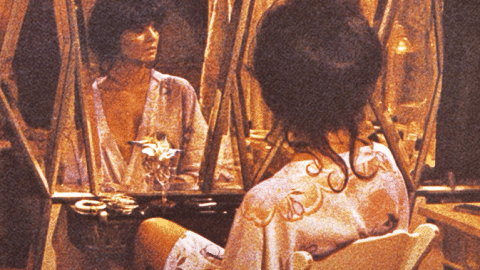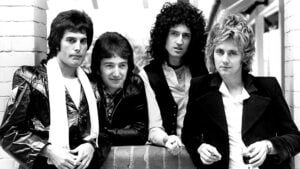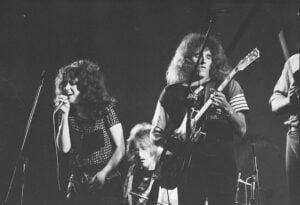12 Linda Ronstadt Stories and Facts That Most Fans Don’t Know

via Linda Ronstadt / Youtube
Linda Ronstadt ruled the airwaves for more than a decade, earning the title “Queen of Rock”—even though she never stuck to just one style. From country and pop to mariachi and opera, she sang it all, and she sang it well. In the ’70s, she was a force of nature, selling records and selling out arenas like no other female solo act at the time.
Some critics tried to knock her for doing too many covers, but let’s be honest—her versions became the definitive ones. And Linda wasn’t just a killer voice with movie-star looks. She had a rich family background, a fearless streak of activism, and a musical range that broke every rule in the book. This is the story of one of rock’s boldest and most brilliant icons—Linda Ronstadt.
Before Linda Rocked the World, Her Family Helped Build Arizona
Long before Linda Ronstadt made her name in music, the Ronstadt family name was already well known in Arizona. Her great-grandfather, Federico Jose Maria “Fred” Ronstadt, moved to Tucson in 1882 when he was just 14. According to his son Edward, in a piece published by the University of Arizona, Fred spent years learning blacksmithing and wagon making before launching the F. Ronstadt Hardware Company — a business that became a Tucson landmark and stayed open until 1985.
But Fred didn’t stop at hardware. The Ronstadts were also behind some of Arizona’s earliest pharmacies, and their love of music ran deep. The University of Arizona even keeps an archive called Tucson’s Ronstadt Family — and surprisingly, Linda only gets a few mentions in the “Music” section. While her dad ran the hardware store until it closed, her mom’s side of the family had its own colorful legacy too.
Her Grandpa Invented the Future (and Didn’t Need a Degree to Prove It)
Linda Ronstadt’s roots aren’t just musical — they’re inventive, too. Her mom, Ruth Mary Ronstadt (née Copeman), came from Flint, Michigan, and her father, Lloyd Copeman, was a mechanical engineer with a wild imagination. According to Inventor’s Digest, Lloyd was kicked out of Michigan State (possibly for being too ahead of his time), but that didn’t stop him. In her 2013 memoir Simple Dreams, Ronstadt shared that he built an early version of the microwave back in 1918, using what he called “cold heat” — and once fried an egg through a newspaper to prove it! He never patented it, thinking it would be too pricey to produce.
But he did patent a lot of other stuff — nearly 700 inventions, including electric stoves, toasters, and even ice cube trays. When Michigan State later offered him an honorary degree, he declined, saying:
“When the degree would have done me some good, you wouldn’t give it to me. Now I have little desire to accept it.”
Her Dad’s Record Collection Was Basically Her First Music Teacher
Gilbert Ronstadt might’ve run a hardware store, but he had a musical heart — and his love for music shaped Linda’s future. According to Rolling Stone in 1975, Gilbert had played guitar with mariachi bands while living in Mexico and made sure Linda soaked up all kinds of great music growing up. She recalled being introduced to artists like the Beach Boys, Peggy Lee, and Billie Holiday thanks to her dad’s eclectic taste.
That early influence led Linda to form a folk trio with her siblings in high school, as noted by Biography. While performing at Catalina High, she met Bob Kimmel, a fellow musician who immediately recognized her talent. He later moved to L.A. to chase his music dreams, urging Linda to join him. After high school and one semester at the University of Arizona, she did — and the Stone Poneys were born. Their biggest hit, “Different Drum,” written by Michael Nesmith of The Monkees, climbed to No. 13 on the Billboard pop chart in 1967, according to The Wall Street Journal.
How Linda Accidentally Helped Create the Eagles
After parting ways with the Stone Poneys, Linda Ronstadt kept building her solo career — and unknowingly sparked the beginning of one of rock’s biggest bands. As she shared in her memoir (via Billboard), she was hiring new backup musicians in the early ’70s when her manager, John Boylan, played her a demo by a drummer named Don Henley. Though his songs weren’t quite the right fit for her, his drumming caught her ear. “I heard him play the drums when I was walking through the room at the Troubadour and I thought he was such a good drummer,” she remembered.
Ronstadt brought Henley on board, along with local guitarist Glenn Frey. The two hit it off while touring with her and decided to form their own band. Ronstadt even suggested Bernie Leadon join, while Boylan recommended Randy Meisner — and just like that, the Eagles were born. “I remember coming home one day and they had rehearsed ‘Witchy Woman’ and they had all the harmonies worked out,” Ronstadt recalled. “It was fantastic. I knew it was gonna be a hit.”
Linda Ronstadt Rocked the ’70s Like No One Else
While the Eagles soared on their own path, Linda Ronstadt carved out her own legendary place in ’70s rock history. As Playboy noted in 1980, her first few solo albums earned her early recognition — including a Grammy nomination for “Long, Long Time” from the 1970’s Silk Purse. But it was her fourth album, Don’t Cry Now, that went gold and set the stage for the real breakout. Then came Heart Like a Wheel in 1974, and everything changed. It went double platinum, gave her a No. 1 hit with “You’re No Good,” and earned her first Grammy for a Hank Williams cover.
From there, it was hit after hit: Prisoner in Disguise (1975), Hasten Down the Wind (1976), Simple Dreams (1977), and Living in the U.S.A. (1978) — all platinum-selling albums filled with smash songs like “Blue Bayou” and “It’s So Easy.” According to Playboy, she regularly sold out massive arenas — a rare feat for a female solo artist back then. In 1980, Cashbox crowned her the most successful female artist of the decade.
Ronstadt Had a Gift for Making Other People’s Songs Her Own
Linda Ronstadt didn’t need to write every hit to make it unforgettable. While she dabbled in songwriting, her true magic was in how she interpreted the work of others — and often outshined the originals. Take “Blue Bayou,” for example. Though Roy Orbison wrote and recorded it (and even Elvis gave it a shot), Ronstadt made it her own — so much so that her version is the one most people remember.
She gave her powerful spin to tracks from music legends like Dolly Parton (“I Will Always Love You”), Buddy Holly (“It’s So Easy”), Warren Zevon (“Poor, Poor Pitiful Me”), and even her former bandmates Don Henley and Glenn Frey (“Desperado”). Her friend J.D. Souther wrote several songs just for her.
In a 2013 interview with Music Radar, Ronstadt said songwriting just wasn’t her calling:
“Songwriting wasn’t my gift… I just didn’t wake up and say, ‘I’ve got to write a song.’”
She Was Branded a Sex Symbol — Even If That Wasn’t the Plan
In the 1970s, being a female rock star often meant getting labeled a sex symbol whether you liked it or not — and Linda Ronstadt was no exception. Despite her incredible talent, much of the media attention focused on her looks. In a 1980 Playboy interview, she made it clear that wasn’t her goal. She said:
“I didn’t set out to become a sex symbol. I set out to be a singer.
“I’ve never tried to keep sexuality out of my personality or my singing. It’s fun that people think I’m sexy.”
But not all publicity felt flattering. A few years earlier, Rolling Stone published a series of steamy photos by Annie Leibovitz that Ronstadt hadn’t approved. Speaking to New Times, she said:
“That picture implied… they had to go to the other extreme and look real dishy all the time. The point is to be yourself, to be a female person.”
Linda Ronstadt Took Big Risks on Broadway and in Opera
After ruling the pop and rock charts in the ’70s, Linda Ronstadt wasn’t content to stay in one lane. She stepped way outside the norm for a rock star by heading to Broadway in 1981 to star in The Pirates of Penzance. The Gilbert and Sullivan classic opened off-Broadway before hitting the big stage, and while critics weren’t wild about the production itself, Ronstadt got plenty of praise. The New York Times gave her kudos for her performance, even if they had issues with the show’s sound.
Ronstadt took an even bolder step in 1984, starring in Puccini’s La Bohème, fulfilling a longtime dream. Unfortunately, not everyone was impressed. As The New York Times put it:
“Miss Ronstadt seems tentative and shaky… Whatever else is to be said about this performer, she’s no fool and no coward… one can only admire the bravery that allows her to forge ahead anyway, reason be damned.”
Ronstadt Faced Backlash for Playing in Apartheid-Era South Africa
In the early ’80s, Sun City Resort in South Africa was a hot spot for major artists — but also a lightning rod for controversy. Due to the country’s apartheid regime, most musicians honored an industry-wide boycott and refused to perform there. Linda Ronstadt, however, didn’t follow suit. In 1983, she played a show at Sun City, joining stars like Rod Stewart, Barry Manilow, and Dolly Parton in crossing the informal picket line (per Africa Is a Country).
Ronstadt didn’t shy away from defending her decision. In an interview with journalist Don Lane, she said:
“If you disagree with the policies of the government, which I do very definitely… I don’t think that’s enough of a reason not to go and play music there.”
She added:
“If I decided that I wasn’t going to play where attitudes of racism prevailed… I certainly couldn’t play in Australia, or England, or lots of places in the United States.”
She Never Shied Away from Speaking Her Mind
As her music career evolved, Linda Ronstadt became just as known for her bold political opinions as her powerhouse vocals. In 2004, during a show at the Aladdin in Las Vegas, she dedicated her performance of the Eagles’ “Desperado” to filmmaker Michael Moore, whose documentary Fahrenheit 9/11 had just won big at Cannes. That didn’t go over well. Aladdin president Bill Timmins kicked her out of the hotel and banned her from returning (via The Progressive).
By 2006, Ronstadt wasn’t pulling punches when it came to President George W. Bush. Backing the Dixie Chicks’ criticism of him, she told Contact Music, “The Dixie Chicks said they were embarrassed he was from Texas. I’m embarrassed George Bush is from the United States. He’s an idiot. He’s enormously incompetent on both the domestic and international scenes.”
She also stood firmly with the LGBTQ+ community, telling Gay.net in 2009:
“[One] of the strongest [communities] that we know in this country is in the gay community, because they’ve had to band together to survive emotionally. I’m not so sure this country understands or values that.”
She Teamed Up with Dolly and Emmylou for an Iconic Country Collab
Linda Ronstadt had already built strong musical ties with Emmylou Harris and Dolly Parton by the time they joined forces for something truly special. In 1975, Ronstadt and Harris recorded a duet called “The Sweetest Gift,” and that same year, Linda put her own spin on Dolly’s classic “I Will Always Love You.” According to The Boot, the trio had talked about working together for years, but busy schedules kept it on the backburner.
Finally, in 1987, the long-awaited Trio album arrived — and it was everything fans hoped for. The record topped the Billboard country albums chart, won a Grammy for Best Country Performance by a Duo or Group with Vocal, and produced the No. 1 single “To Know Him Is to Love Him,” written by Phil Spector (via Dolly Parton’s website).
The trio reunited again for Trio II, which hit shelves in 1999, proving lightning really can strike twice.
Illness Brought Her Career to a Close — But Not Her Legacy
Linda Ronstadt started noticing something was off with her voice around the year 2000. According to Sounds Like Nashville, by 2009, it had become clear that something more serious was going on. In 2013, she revealed to USA Today that she had Parkinson’s disease, saying:
“I think I’ve had it for seven or eight years already, because of the symptoms that I’ve had. No one can sing with Parkinson’s disease, no matter how hard you try.”
Years later, however, doctors revised her diagnosis to supranuclear palsy, a rare brain disorder. In a 2020 interview with CNN, she explained:
“I couldn’t hear the top end of my voice… My throat would clutch up. It would just be like I had a cramp or something… Literally my entire career flashed in front of my eyes.”
Though her singing days are over, Ronstadt’s place in music history is rock solid — and her voice still echoes through every record she made.













